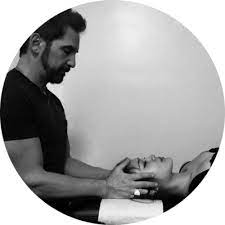A chiropractic adjustment is a non-invasive, non-addictive therapy provided by chiropractors. Chiropractic is a non-surgical therapy option that may help you manage your symptoms and pain.
Chiropractic adjustments relieve restrictions or misalignments in the spine and other joints of the body, reducing inflammation and improving the function of both the affected area and the neurological system. Your body can handle symptoms better if you increase movement and improve nervous system function.
Lets us have an overview of scoliosis and sciatica and how a chiropractor can help to treat such a condition.
Scoliosis
Scoliosis is caused by what?
Idiopathic scoliosis is the most prevalent cause of scoliosis, which means “unknown”. One study suggests that there is a genetic component to it, indicating a familial lineage. There are other disorders, such as cerebral palsy and multiple sclerosis, that can cause the abnormal curvature of the spine, but determining the etiology of scoliosis in an individual can be challenging. The spine has a curvature when it is naturally oriented from the side, which allows for movement, upright walking, and the passage of nerve signals throughout the body.
Scoliosis occurs when the spine folds out sideways, especially during the preteen (adolescent, growth spurt) years when the body is still growing. The curvature might be congenital (inherited), neuromuscular (the aforementioned issue can interfere with proper spine growth), or idiopathic (there is no known causal cause).
As we age, our spine tends to bend to the side, causing adult scoliosis to be disruptive and degenerative. Scoliosis in adults can also be associated with arthritis, disc herniations, and stenosis.
A chiropractor can recommend a course of therapy to deliver improvement including curve reduction, pain alleviation, postural advantages, symmetry, and general improvement in quality of life, regardless of how the spine got misaligned.
How can you find out whether you have scoliosis? It starts with a minor curvature of the spine that gradually increases over time and might be difficult to notice. This causes more than just the physically visible condition of a bent back, which is one of the last things an observer notices about someone with this ailment.
There isn’t always a lot of warning from your body when you have scoliosis. Sometimes scoliosis causes no discomfort and is not physically evident until the problem is checked for or there is a notice of the head tilted to the side or garments fitting awkwardly that formerly fit fine.
Mild curvature might lead to postural and spinal issues. Severe scoliosis can make breathing difficult and cause chest discomfort. It is important to remember, however, that not all types of scoliosis produce discomfort.
Adult scoliosis can develop gradually, degenerating the spine and driving it into an unnatural bend. This can have an impact not just on posture but also on one’s ability to walk without help.
Chiropractors treat many types of scoliosis without invasive surgery or the use of braces to straighten the abnormal curvature.
What is the conventional therapy for scoliosis?
Little has been done to treat scoliosis outside of pain treatment, brace use, or invasive surgery. A chiropractor can treat a wide range of scoliosis symptoms and difficulties, assisting the body in compensating for the curvature and correcting alignment concerns.
Sciatica
Sciatica is pain that travels down the sciatic nerve, which exits the lower spine and branches out to the hips and buttocks, as well as the back of each leg. This discomfort can range from mild to severe, like an “electric shock.” It is not a disease in and of itself, but rather a symptom of another type of back pain. Chiropractic treatment services may address the underlying reason as well as sciatic nerve pain in a natural and gentle way.
If you are older, overweight, or have diabetes, you are more prone to get sciatica symptoms. Ironically, it appears to affect those who perform a lot of heavy lifting or twisting, as well as those who sit a lot.
One cause is spinal stenosis, which is a narrowing of the spinal canal in one of the lumbar vertebrae. An extra bone that accumulates when spinal discs deteriorate may create this compression. Discs are spongy cushions that are located between the vertebrae. As one ages, they get thinner and dryer. This is also referred to as degenerative disc disease. A herniated or bulging disc may compress the sciatic nerve.
Rest is strongly recommended. Mild sciatica can be treated by a chiropractor.
Chiropractic treatment for persistent and severe sciatic nerve problems involves the following:
- Spine decompression
- Shock Wave Therapy
- Laser Therapy of Class IV
Chiropractors have the knowledge and skills to deliver all-natural sciatica pain relief exactly where it is needed.








